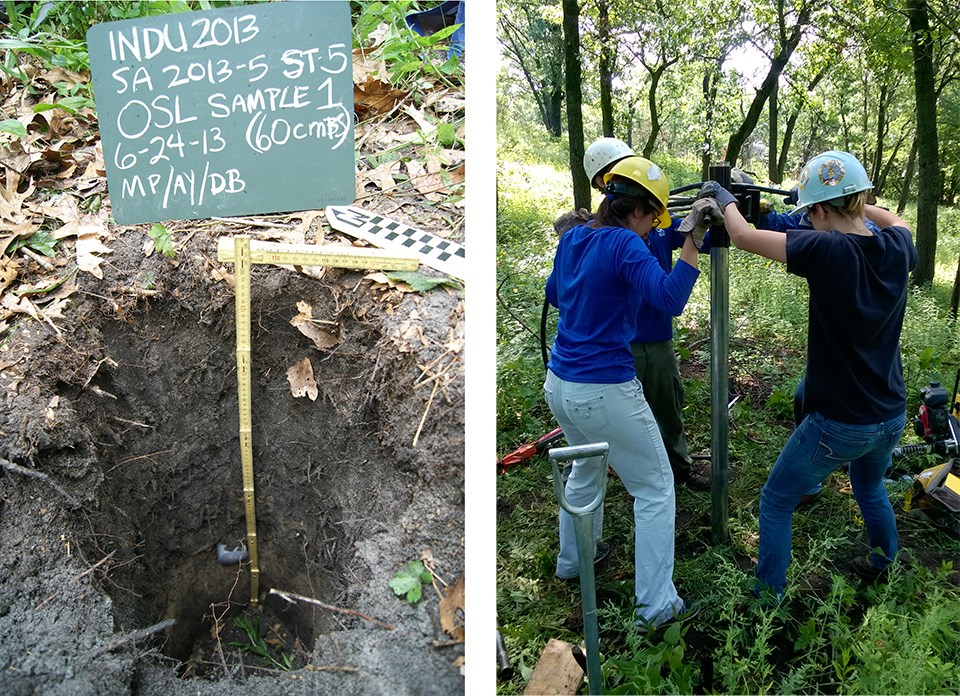Last updated: July 20, 2020
Article
Geoarchaeology of the Tolleston Beach, Indiana Dunes National Lakeshore

The Midwest Archeological Center is conducting geoarchaeological research on the Tolleston Dune, focusing on how eolian processes affect archeological resources. The relation of a sparse archeological record on the Tolleston Dune to past human occupation in that area cannot be answered without understanding the geologic setting – the history of dune migration and its effects on the preservation of archaeological sites. We have developed an OSL dating program for the Tolleston, deriving samples from shovel tests and vibracores in order to date near-surface deposits, or those accessible to shovel testing. This will be used to assess whether this common approach to archeological inventory is useful in such environments. The sampling also focuses on dating specific portions of dunes to determine their age, history of their formation, and periods of reactivation, in order to identify areas more likely to contain undisturbed archaeological sites. OSL samples are currently being processed at the School of Natural Resources, University of Nebraska-Lincoln.

